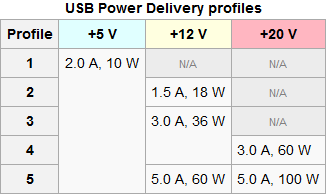Last October we wrote about choosing between a dedicated USB charger or a charge and sync USB hub. At the time USB charging could be quite frustrating for consumers as device and charger incompatibilities were rampant. Fortunately dedicated smart chargers, charge and sync compliant hubs, and charge and sync compliant devices are now far more common and USB charging has become more plug and play than it ever used to be. The era of fully standardized USB is upon us. USB Type-C.
USB Charging Past, Present, and Future – Type-C
Joshua Henry | May 27, 2015

Past
For many of us, just going back a few years was a dark time in USB charging. It seemed everyone had some device that would only charge from its stock charger and nothing else, or you could sync data to your computer but you couldn’t charge from it. When the Apple iPad was released many found themselves in this situation. Fortunately with its mass popularity 3rd party chargers were quickly developed to emulate the Apple charging signals which went on to become the unofficial universal standard for many other devices. This was great for consumers who didn’t want to buy expensive stock chargers but it still didn’t solve the charge and sync problem. Often syncing while charging either isn’t possible or is extremely slow. Eventually the USB Implementers’ Forum (USB-IF) designed a standard to resolve this issue, Battery Charging 1.2, and slowly it has been adopted into most modern devices, including later generations of the iPhone and iPad.
Present
Today several chipset manufacturers make smart chipsets that try to intelligently detect what device you are using and emulate the best charging signal for that device. Most major phones and tablets are supported from Apple iOS, Android, and Windows Mobile based devices from many different manufacturers. For 2015 we have introduced a whole new line of dedicated smart chargers and an update to our bestselling USB 3.0 hub to be BC 1.2 compliant ensuring almost any USB device will charge at the fastest rate possible.
Future
The future for USB charging appears bright with the introduction of USB Type-C, a new standardized universal connector that will hopefully become commonplace on future devices from cell phones to laptops. Currently there aren’t many USB Type-C devices on the market but the two that we’ve been testing have interchangeable power adapters thanks to cross-compatibility of the USB-IF Power Delivery standard.

Our testing of the cross-compatibility yielded some interesting results and there are some limitations to this cross-compatibility that need to be addressed. The most important information is knowing that the USB-IF Power Delivery standard has different power profiles and not every power adapter will support them all:

- The Apple MacBook 12″ with USB Type-C ships with a 29W power adapter. Looking at the specs written on the adapter it supports two power profiles of 5.2V at 2.4A and 14.5V at 2A (neither of which is a standard PD profile in the chart above)
- The Google Chromebook Pixel [2] 2015 with USB Type-C ships with a 60W power adapter. It’s specs show support of 5V, 12V, and 20V at 3A (amperage for 5V and 12V is not labeled but we’re assuming for now that it supports 5V at 2A and 12V at both 1.5A and 3A as shown in the chart above)

It’s clear from our testing that the MacBook will accept charging signals from a PD power adapter like the Chromebook’s, but it is also clear that the MacBook adapter isn’t quite following the PD standard, rather something custom from Apple. We also found the MacBook does not charge any faster or slower using the Chromebook’s more powerful power adapter.
What is perhaps more interesting though is that the Chromebook Pixel [2] 2015 charges at all (albeit at a slower rate and a warning message “Low power charger connected – Your Chromebook may not charge while it is turned on”) when using the MacBook power adapter. This may suggest that the MacBook power adapter is indeed capable of following at least some PD profiles but that they just aren’t labeled on the power adapter.
While this is just an early look at USB Type-C and the USB-IF Power Delivery standard, later this year we expect to see several new systems sporting USB Type-C and we’ll be sure to keep you updated on the charging situation. We hope that cross-compatibility between devices and chargers will continue and only become more universal.
View Other Articles in Category
Industry News, Technology Deep Dive, USB, USB Power Delivery


Loading Comments